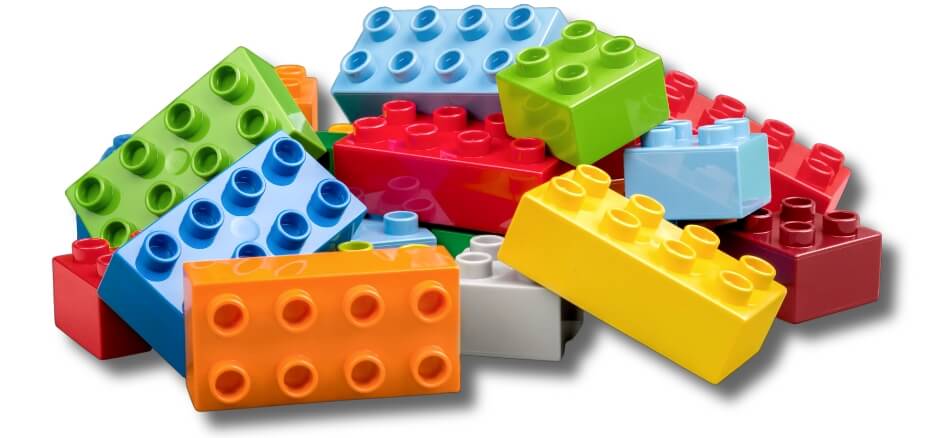As an Amazon Associate I earn from qualifying purchases.
Welcome to the definitive resource for information about how to draw lego. Lego isn’t just a toy; it’s an entire world of creative possibilities waiting to be built, destroyed, and rebuilt—endlessly. For those who love the tactile joy of snapping plastic bricks together to create something entirely new, drawing Lego art offers a different but equally satisfying creative expression. Whether you’re a seasoned Lego drawing master looking to expand into 2D art or a beginner aiming to translate your love of Lego into pen-and-paper form, this comprehensive guide will walk you through the colorful landscape of how to draw lego.
A Minimalist Toolkit for How to Draw Lego
Before we learn the art of LEGO drawing, we need to set the stage with the right tools. Unlike traditional art, LEGO drawing requires only a handful of items, most of which you likely already have:
- LEGO bricks: These colorful and versatile building blocks will serve as your model, your muse, and your ultimate reference point. The creative journey begins with the careful selection of each brick, paving the way for endless possibilities in your designs.
- Paper: Opt for a high-quality sketchbook with substantial weight to provide a stable and reliable canvas for your artistic expressions. The right paper ensures that your drawings have a durable and supportive home where your creativity can flourish.
- Pencils and erasers: Equip yourself with a simple yet reliable set of pencils and erasers. Precision is key in your creative process, so choose pencils that allow you to achieve fine details effortlessly. A good eraser will be your trusted companion in refining your sketches to perfection.
These tools are the pillars on which we’ll build our foundation of LEGO art. We need to get creative now, so let’s get our hands pulled up.
Tips for Beginners
Don’t worry if you’ve never drawn a LEGO drawing model before. Keeping these tips in mind will ease you into creating your LEGO masterpieces:
- Keep it Simple: When embarking on your LEGO building journey, start with a basic LEGO brick. At first glance, its rectangular shape may appear straightforward, but when sketched precisely, it serves as the foundation for all that follows in your creations.
- Practice Shapes: Understanding the geometry of each LEGO element is crucial. The intricate interlocking system introduces a range of consistent cross-sections and angles that contribute to the overall structure. Continuous practice is key to mastering these fundamental shapes.
- Studying LEGO Designs: Delve into the array of resources that LEGO offers online, including design guides and illustrative examples. By immersing yourself in these materials, you can acquaint yourself with the distinctive LEGO drawing style and gain inspiration for your own imaginative constructions.
With these building blocks in place, we’re ready to start sketching. But remember, it’s a process, not a race. Every mark made on paper represents a step closer to encapsulating the spirit of LEGO.
Basic LEGO Drawing Techniques
Now, the fun begins. We’ll examine the basic steps for drawing quintessential LEGO elements. Each has its own challenges and rewards. If you follow these instructions, you’ll have an assortment of LEGO parts that can be used in any design.
Drawing a LEGO Brick
A LEGO brick is more than just a rectangular prism. It’s a symbol for a world of interlocking possibilities. To draw one:
- Begin by sketching the rectangular prism shape, ensuring its proportions are accurate. Then, enhance the structure by outlining it with precise lines.
- Next, depict the nubs on the top surface by carefully drawing small, uniform circles to symbolize the studs, adding depth and realism to the design.
- Utilize a straight-edge tool to guarantee sharp and well-defined corners, ensuring the overall appearance of the brick is polished and professional.
This simple brick is the foundation for every LEGO creation and is an important skill to master.
Minifigures and Accessories
No LEGO scene is complete without its inhabitants. Drawing minifigures involves more detail, but it’s a rewarding challenge.
- To start creating your minifigure, ensure you work with proportionate heights and widths. Typically, a minifigure stands about four bricks tall, serving as a foundational guide for your design process.
- Once you’ve established the basic structure, focus on adding the defining features like the head, hands, and torso. While these parts require more attention to detail, remember not to fixate on achieving perfection at this initial stage of development.
- When it comes to incorporating accessories, consider beginning with the hand or head that interacts with them. Always keep in mind that these accessories should be in scale with your minifigure, aligning with the overall design aesthetic you’re aiming to achieve.
These techniques will provide you with a cast of characters and the tools they need to bring your LEGO world to life.
Advanced LEGO Drawing Art Ideas
Once you’ve mastered the basics, you might find yourself wanting to push the boundaries of what’s possible with LEGO art. Here, we’ll explore three-dimensional structures and entire scenes.
3D LEGO Drawing Structures
Creating a 3D effect on a flat surface requires careful shading and perspective. Here’s how to achieve it:
- Begin by creating a robust outline that clearly defines the structure of your work.
- Implement shading techniques to convey depth effectively. It is crucial to consider the placement of the light source and shadows during this phase as they play a vital role in creating a realistic representation.
- Enhance your artwork by adding highlights to the areas where light would naturally fall, creating the perception of three-dimensional roundness.
This technique takes practice, as you’ll be creating a sense of space where none exists.
Complex LEGO Drawing Scenes
Building a complex scene involves storytelling as much as drawing. This is where imagination meets technique:
- To start, begin by outlining the entire scene with loose sketches, allowing yourself to grasp the positions and relationships between various elements within it.
- Next, work through the layers of your creation. Begin with the background, gradually shifting focus to the mid-ground elements, and conclude by adding characters and foreground details to enhance the depth and richness of the scene.
- Embrace the power of detail in your artistic endeavor. Feel free to incorporate numerous small elements that contribute to the narrative tapestry of your composition, enriching the storytelling aspect of your visual creation.
This process can be an involved one, but the end result is a feast for the eyes, a world ready to be explored.
Inspiring LEGO Drawing Art Projects
You may be seeking inspiration at this moment. Below are a few exemplary LEGO drawing art projects that showcase the versatility and creativity the medium allows.
LEGO Brick Portraits
A popular form of LEGO drawing art is the portrait. By cleverly arranging bricks, artists can create striking representations of faces, places, and even pop culture icons.
3D LEGO Sculptures
Some talented LEGO artists push the boundaries and create sculptures that defy the traditional “block” perception of LEGO. These larger-than-life pieces are intricate and awe-inspiring.
LEGO Cityscapes
The grandeur of an entire city made out of LEGO has a charm all its own. Neatly ordered streets, complex living spaces, and the occasional superhero sighting are all part and parcel of the LEGO cityscape.
These projects are not only visually appealing but also serve as a wellspring of possibilities and ideas for your own LEGO drawing.
Tips for Teaching LEGO Drawing
If you’re an educator or a parent, you might be interested in sharing the joys of LEGO drawing. Here’s how to incorporate it into your curriculum or home activities:
- Utilize LEGO as Models: Incorporating actual LEGO bricks and figures as tangible models can provide vivid reference points, aiding in a more immersive learning experience.
- Nurture Creativity: Once foundational skills are honed, encourage students or children to unleash their imagination by crafting unique LEGO-based narratives and intricate scenes of their own creation.
- Foster Collaboration: Engaging in a collaborative LEGO drawing session within a group setting not only enhances the learning process but also cultivates a sense of camaraderie and teamwork among participants.
For both the facilitator and the participant, teaching LEGO drawing can be a fun and satisfying experience.
Conclusion
Drawing LEGO is more than just a sketch on paper. It’s a celebration of creativity, a nod to a world of endless building possibilities, and a skill that, once learned, can be expanded upon indefinitely. It’s a fun activity with the potential for personal and educational growth. With practice, you’ll find that LEGO drawing not only hones your artistic talents but also fosters patience, problem-solving, and an appreciation for the meticulous design that LEGO is known for. Explore the skill of drawing LEGO figures with unrestricted imagination. Who knows what elaborate and wondrous world you might construct next on that blank sheet of paper? Don’t forget, the ultimate goal is not perfection—although that can be a nice byproduct—but rather, the joy of creating something uniquely your own.
Frequently Asked Questions
Q1. How to draw Lego perfectly?
Answer: Practice sketching geometric shapes with clean lines and vibrant colors to capture the iconic look of Lego bricks.
Q2. How can LEGO drawing benefit creativity?
Answer: LEGO drawing, much like actual LEGO building, promotes creative thinking and problem-solving. When translating 3D objects into 2D, you engage your brain in a way that’s both challenging and rewarding, leading to more creative thought pathways being activated.
Q3. Are there specialized tools for LEGO drawing?
Answer: While LEGO drawing can be done with traditional art supplies, there are specialized LEGO-compatible grids and templates available to aid in the process, especially for more complex structures and scenes.
Q4. Can LEGO drawing be a therapeutic activity?
Answer: For many, the structured process of drawing LEGO can be meditative and calming. It offers a clear goal and a set of finite tasks to reach it, providing a sense of accomplishment and peace.
Q5. What are some common challenges in LEGO drawing?
Answer: The main challenge in LEGO drawing is in maintaining proper proportion and perspective. This calls for an intense attention to detail and a solid grasp of perspective drawing techniques.
Q6. How can LEGO drawing help with stress relief?
Answer: Drawing’s repetitive nature can help calm the mind and lessen tension and anxiety. Focusing on the structure and precise lines required for LEGO drawings can be a grounding experience, pulling your attention away from stressors and towards a satisfying creative process.
As an Amazon Associate I earn from qualifying purchases.

